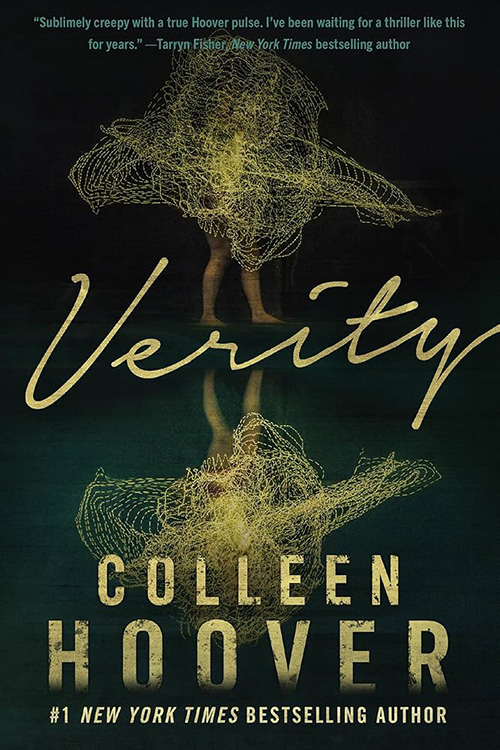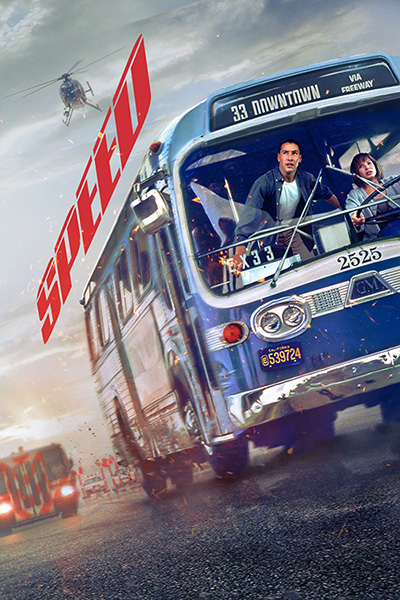
espite Julie Andrews’s catchy song (“Do Re Me” The Sound of Music), when it comes to writing, don’t start at the very beginning. It’s not a very nice place to start.
As a creative writing professor, one of the most common errors I see are stories starting with backstory or exposition. It’s a killer, and I’m not the only one to say so. Kristin Nelson and Angie Hodapp (Nelson Literary Agency) list this as the number one problem with novel openings, and if the literary agent is bored on page one, they’re going to pass on the project—even if the rest is riveting. They have to get to the good part before they say yes, and they’re too busy to stay through a slow opener.
Signs that you’re starting with backstory and/or exposition are what Nelson and Hodapp call the Deadly Rs:
They give two great suggestions on how to detect the dreaded Deadly Rs, so what I want to do here is demonstrate what to do instead of backstory or exposition.
In Media Res, an Example
When you write, begin in media res, in the middle of things, so that you “hook” the reader into wanting to read more. A line like “it was a dark and stormy night” is clichéd but also passive. You want to create a more compelling opening.
[Trigger Warning: blood and gore depiction. Skip to the next subhead to avoid.]
 My son’s girlfriend handed me a book recently, Verity by Colleen Hoover. I was a bit trepidatious. I hate to disappoint people when their “must read” recommendation falls flat. Fortunately, Hoover’s book grabbed me from the first line and did not let go.
My son’s girlfriend handed me a book recently, Verity by Colleen Hoover. I was a bit trepidatious. I hate to disappoint people when their “must read” recommendation falls flat. Fortunately, Hoover’s book grabbed me from the first line and did not let go.
“I hear the crack of his skull before the spattering of blood reaches me.” —Hoover
I have since recommended it to several friends, which is something I seldom do. I use Hoover’s book as an example in craft articles, not because it’s perfect, but because I just read it and it does several things very well. The first being the opening sentence that starts in media res (from page 1 of Verity by Colleen Hoover):
I hear the crack of his skull before the spattering of blood reaches me.
I gasp and take a quick step back onto the sidewalk. One of my heels doesn’t clear the curb, so I grip the pole of a No Parking sign to steady myself.
The man was in front of me a matter of seconds ago. We were standing in a crowd of people waiting for the crosswalk light to illuminate when he stepped into the street prematurely, resulting in a run-in with a truck. I lunged forward in an attempt to stop him—grasping at nothing as he went down. I closed my eyes before his head went under the tire...
While not everyone will be riveted, and many will turn away from the violence of the scene, those people are not Hoover’s audience, and they will put the book back on the shelf immediately. Conversely, those who like that kind of book will stay to the end.
Verity begins with an accident then leads to the main character in a coffee shop bathroom with a man she’s never met, cleaning blood off her shirt and face:
The stranger holds the door open for me when we reach the coffee shop. A woman carrying a coffee in each hand attempts to squeeze past me when she sees my shirt. She scurries backward to get away from me.
Notice that it’s not just starting in the middle of the action, but that the action continues, and the writer is using active verbs. The writer doesn’t say the shirt was bloody; she shows it through the action as a woman “scurries” away. She’s also using very clipped language, the kind we use when we’re in shock. It builds distance, but only a little, until they get to the relative safety of the bathroom where the shock wears off, and the rest of the reaction follows. The writer uses sensory details to draw more details into the story.
I can smell the blood now. The tanginess in the air sends my mind whirling back to when I was ten. The smell of blood was strong enough to remember it all these years later.
The reader experiences more sensory details, the adrenaline letdown with “trembling fingers” and the need to focus on something other than what they just witnessed. The interesting thing is that without knowing it, the reader gets some foreshadowing of the character’s backstory in the line about the smell of blood when she was ten. It’s short, a brief sentence, and that’s all the backstory you need right now. Then she asks the man with her if he’s okay:
“I’m fine,” he says. “I’ve seen worse unfortunately.”
This gives a sense of the man’s backstory and gives the reader cause to keep reading. What’s worse than seeing “a man’s head being crushed beneath a truck”?
They trade snippets of miserable life experience in the bathroom of the coffee shop, her now wearing his shirt, as hers is unsalvageable. He finally tells her that:
“I pulled my eight-year-old daughter’s body out of a lake five months ago.”
The main character responds, and then he asks her what we’re wondering. What was her story?
“My mother died last week.”
This isn’t just in media res; it continues to be a rollercoaster of trauma in the opening pages. If the book starts like this, what could possibly happen next, the reader wonders. And that’s why as a writer, you start in media res.
At some point, you will have to slow down to build the scene and setting and character and backstory. You’ll have to give the reader space to breathe, but the opening image is so fantastical, so compelling, the reader can’t look away.
4 Tips for Writing in Media Res
1. Begin in the middle of a climactic moment, such as a fight, conflict, or in Hoover’s case, an accident. This shouldn’t be random but should relate to the chain of events that set the story in motion.

- Another example is from the movie Speed, with Keanu Reeves and Sandra Bullock. The movie starts with a bomb squad guy and his partner defusing a bomb in an elevator shaft. This sets off the chain of events that lead to the bomber planting a bomb on a bus that will go off if the bus falls below 50 mph. Check out the trailer, or at least the first fifteen seconds. One character asks the other played by Reeves about a scenario where a gunman has a hostage and is on the way to the plane. What would he (the cop) do? “Shoot the hostage,” Reeves says. Of course, the story barrels to that moment, where he must choose to shoot the hostage.
2. Use active verbs. Avoid passive verbs and passive construction. Passive verbs are words like was, were, has, have, has been, to be, and so on. Notice that Hoover doesn’t let up on the action for one moment. Even when they hit the coffee shop, Hoover doesn’t tell the reader that the character is covered in blood. She shows it by the customer who “scurries” away.
- Note that you can’t get rid of every single was/were/is in a book. It’s just not possible, but use them wisely, such as when Hoover writes, “The man was in front of me a matter of seconds ago. We were standing in a crowd.” Here, the man was passive. They (the crowd) were also passive, so using a passive verb makes perfect sense and moves us closer to the next piece of action.
3. Inject “just enough” backstory. Hoover does this so well that the reader may not even be aware of it at the time. It’s the unspoken thing that happened to the main character when she was ten. One sentence, and we want to know more. Also, there’s a promise in that moment. The writer promises the reader that they will answer the question: What happened when she was ten? By the way, that’s one of the later chapters in the book. There’s also the interjection of the stranger’s backstory about the death of his eight-year-old daughter. The characters do not dwell on these facts. They’re presented like the accident. It’s fast, it’s immediate, and for the most part, the dialogue and inner dialogue are clipped, short, and matter-of-fact rather than flowery because that’s the way someone who has just been through a traumatic event would respond.
- As the story goes forward, it cannot maintain this fantastic speed and constant barrage of trauma. The reader needs to breathe. The reader also needs information. You can use flashback, dialogue, or a line or two of exposition, but avoid the info dump. The reader won’t stick around for it.
4. Make the scene one of high stakes relevant to the plot. Of course if you’re writing a children’s book, you don’t want blood and gore, but the stakes should be high enough that the reader is convinced that the character is in trouble in some way. It should be integral to the plot. Disney does this all the time with a plot about TV kids getting into trouble, and they have to find a way out before parents get home.
- Using Speed as an example again, in the opening scene, there are people in the elevator where they’re trying to defuse the bomb, which creates the high stakes. It’s also integral to the plot, because if the bomber had “won” that round, he probably wouldn’t have pulled the stunt with the bus.
- I’m not going to tell you how all these elements are high stakes and integral to the plot of Verity, you’ll have to read it yourself (no more spoilers).
Prompt
Consider an opening scene in an existing project or in one that you’re planning. Select a moment in the story that is the trigger for the remaining chain of events in your plot.
1. What climactic event would set your story in motion? Is there a fight, a conflict, or an accident?
2. Next, ask yourself if this is the best way for the plot to unfold. What would be more explosive, out of bounds, or borderline offensive? What action would reach the heart of the dilemma? What is the most unexpected thing that could happen that is still relevant to the plot, realistic, and compelling?
- Brainstorm for several minutes. Think outside the box. Erase the box. Look at it from another character’s point of view. See it from a different angle. How can your plot show the reader what they don’t expect to see?
- In Verity, the character is on her way to a meeting in a nearby office building. If the meeting opened the novel, would it be as compelling?
3. Add a setting detail that only your main character would notice or that everyone notices, but your character sees in a unique way.
- What makes Speed so interesting is that Reeves’s character sees things in a different way. His unique viewpoint created the problem and the solution.
4. Finally, write the scene. Don’t think, don’t judge, don’t let the doubts creep in. Write that over-the-top opening, then let it rest. Read it tomorrow. Does it still feel over-the-top or just right? Others will tell you if you’ve gone too far, but more likely, you haven’t gone far enough.
***

Cindy Skaggs is a writer with a decade of experience teaching writing in higher education. She has ten published books, multiple journal publications, and a Pushcart nomination. She teaches classes in first-year writing, creative writing, writing to heal, and creative nonfiction. She has mentored more than sixty completed novels. Her latest book, Dear Someday Writer, guides writers who want to write a book someday to start today. In 2022, she quit her day job and moved to Ireland to study Irish Literature. It seemed like a good idea at the time.